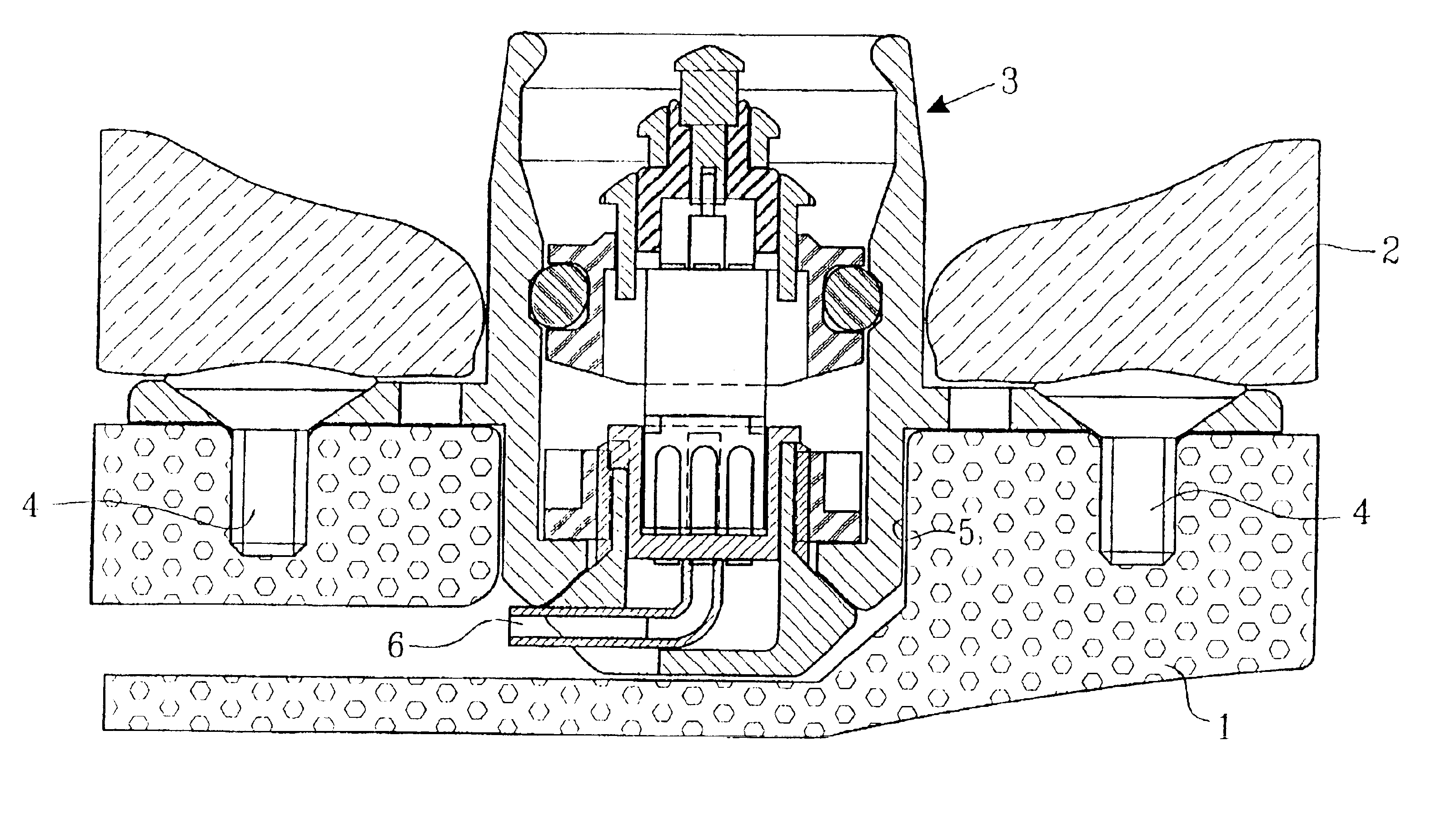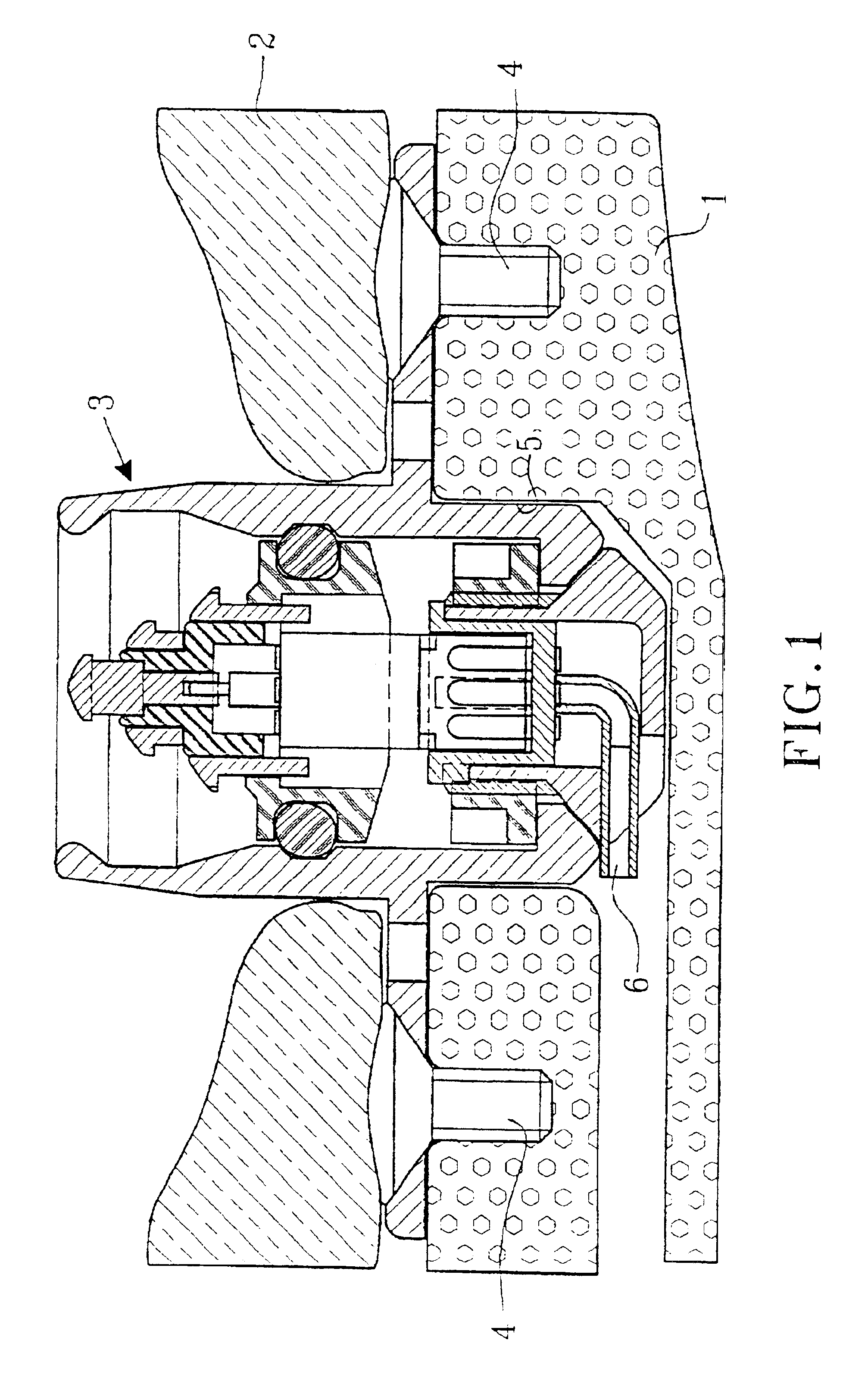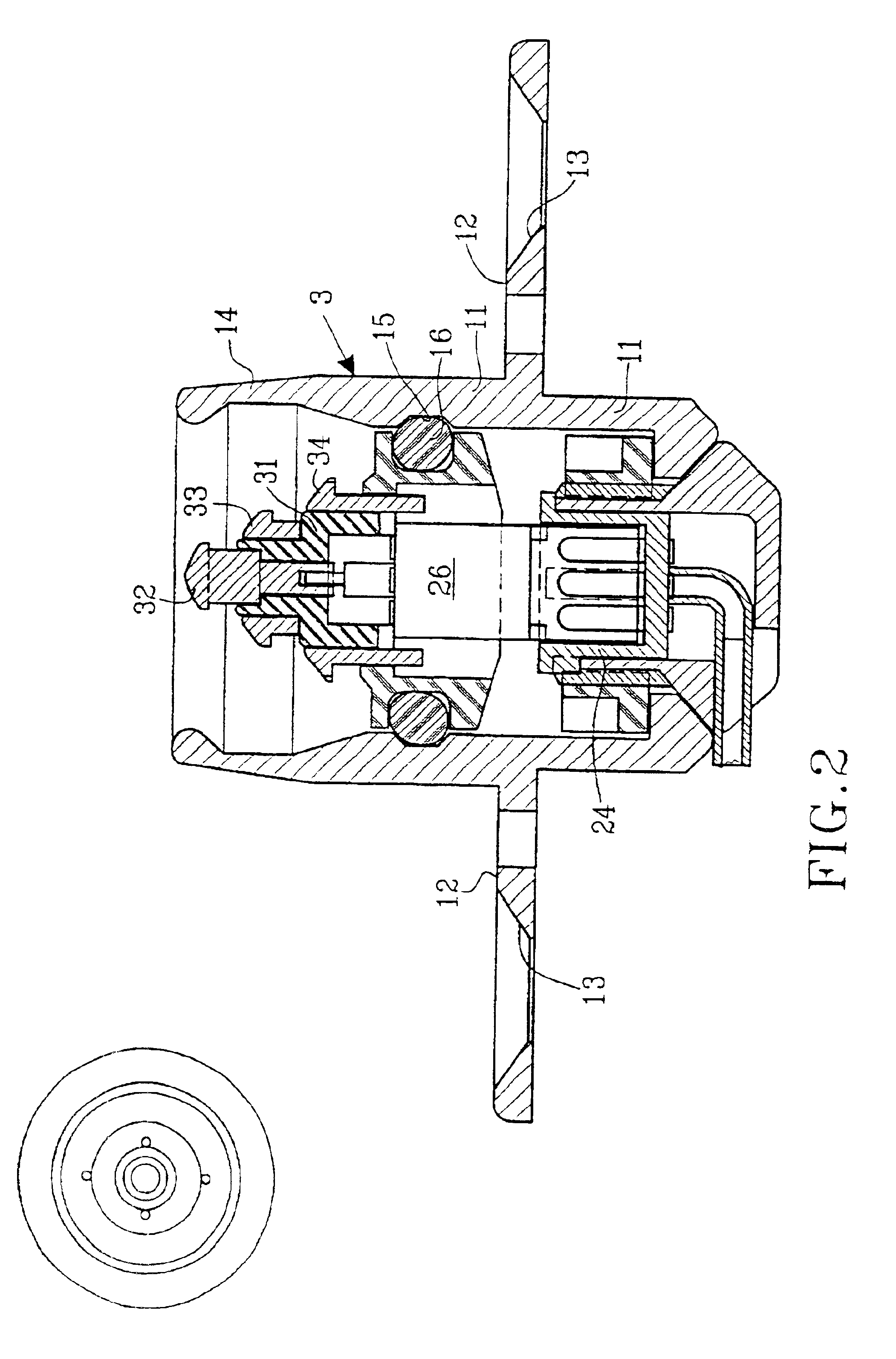Percutaneous bone anchored transferring device
a bone anchored transferring and percutaneous technology, applied in the direction of coupling device connection, infusion needle, sensors, etc., can solve the problems of inability to use commercially available units, inability to pass through the central bore of the implanted unit, and the size of the inner implanted unit to be so small, so as to facilitate the surgical procedure and improve biocompatibility
- Summary
- Abstract
- Description
- Claims
- Application Information
AI Technical Summary
Benefits of technology
Problems solved by technology
Method used
Image
Examples
Embodiment Construction
As mentioned above there is a great demand within several medical-technical applications for a means to transfer electrical information and / or electric energy or to communicate in another way (e.g. to distribute drugs or to air out interior cavities and cell systems) from an outer unit to a subcutaneously implanted inner unit. Such subcutaneously implanted units can be hearing assistive aids, e.g. cochlear implants, middle ear implants, bone conduction devices, devices for suppression of tinnitus, and other medical-technical aids, e.g. tubes, cannulas, stimulators of different types, registration means for biological signals, pumps for distribution of drugs, evacuation of liquids, etc. In principle, such devices consist of the following essential parts: outer unit, connecting device, skin penetrating and bone anchored transferring device, set of cables / communication channel, and subcutaneously implanted inner unit. A principal arrangement utilizing a transferring device according to...
PUM
 Login to View More
Login to View More Abstract
Description
Claims
Application Information
 Login to View More
Login to View More - R&D
- Intellectual Property
- Life Sciences
- Materials
- Tech Scout
- Unparalleled Data Quality
- Higher Quality Content
- 60% Fewer Hallucinations
Browse by: Latest US Patents, China's latest patents, Technical Efficacy Thesaurus, Application Domain, Technology Topic, Popular Technical Reports.
© 2025 PatSnap. All rights reserved.Legal|Privacy policy|Modern Slavery Act Transparency Statement|Sitemap|About US| Contact US: help@patsnap.com



